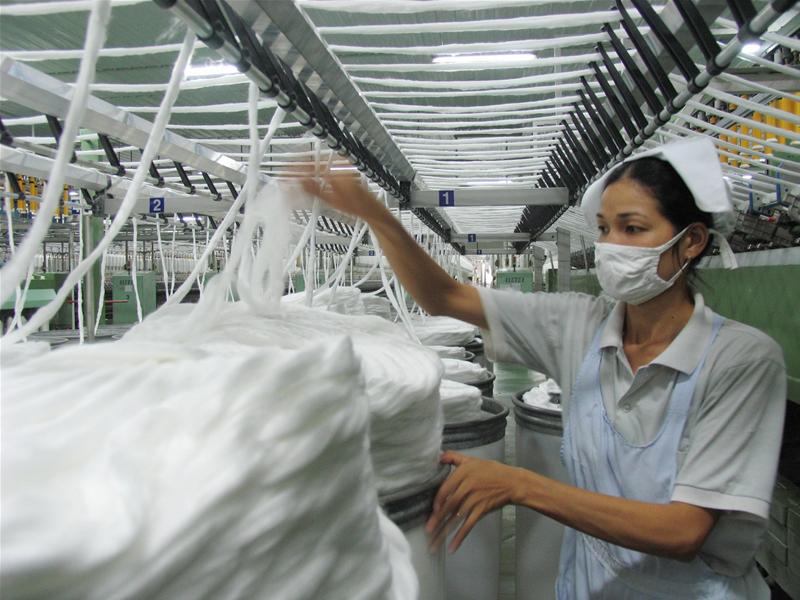The World Bank has forecast Vietnam’s GDP growth in 2014 at 5.5 percent in its latest Global Economic Prospect report, unchanged from its previous projection released earlier this year.
According to WB’s Global Economic Prospects (GEP) report, despite the current tension in the East Vietnam Sea, Vietnam’s economy is forecast to expand at a modest and stable rate in 2014, the same as the rate WB projected in April this year.
The tension, breaking out after China illegally placed Haiyang Shiyou 981 oil rig in Vietnam’s waters and deployed hundreds of vessels including warships and jet fighters to protect the facility, did not have much negative impact on the Vietnam’s GDP growth projection, said WB.
“However, recent political tensions have introduced some uncertainty to the outlook, it said.
Vietnam is expected to continue taking advantage from the global economic recovery process which helps lifting global demand, said WB report.
In addition, business sentiment continue to show a solid expansion in Vietnam despite the recent uncertainties, said the report.
Earlier, the Hong Kong-Shanghai Banking Group also forecast that the tension with China in the sea would leave limited impact on the nation.
However, the registered foreign direct investment (FDI) from China into Vietnam had increase recently, its total remains small compared with the FDI inflows from other countries. The economic relationship between China and Vietnam’s economic relationship can be considered as a supply chain one rather than an investment destination.
But the recent tension, if continued, “may reverse recent improvements”, WB said.
Regarding Vietnamese stock market, WB said “recent political tensions have eroded a 7.3 percent gain of the first four months of 2014 in Vietnam, which reflected strong foreign inflows.”
WB also forecast the Southeast Asian country’s GDP growth at 5.6 percent and 5.8 percent in 2015 and 2016, respectively.
“With improved macroeconomic fundamentals, including price stability, Vietnam’s GDP growth is projected to increase modestly but steadily to reach 5.8 percent by 2016,” said WB report.
|
Regionally, the GDP growth of East Asia region was forecast to slow down partially due to those countries’ tightening policy and political tensions like what is happening in Thailand. But growth in the smaller economies of the region was slightly higher or broadly unchanged, buoyed by recovering exports (Cambodia), foreign direct investment (FDI) inflows and robust remittances (Myanmar, the Philippines and Vietnam) and expansionary fiscal and monetary policies (Laos and Mongolia). Besides, WB said stock markets recovered in early 2014, but several remain well below their levels a year ago. Sovereign bond spreads in the region have declined, reflecting improved fundamentals combined with renewed global risk appetite. Vietnam has seen the largest gains with spreads easing about 200 basis points below their early-2013 levels, reflecting lower inflation and financial stabilization, including the containment of non-performing loans. |


















































